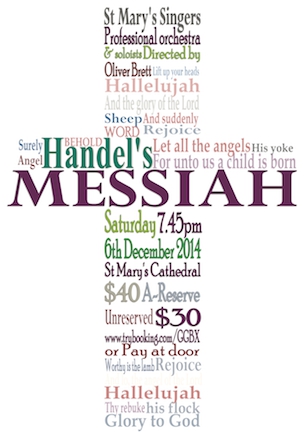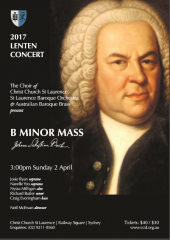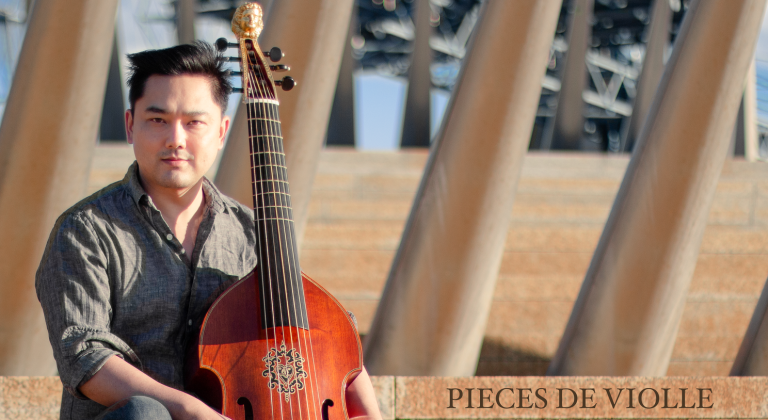Concert Review: Bach – The Mind of a Genius/ Bach Akademie Australia
Concert Review- Bach – The Mind of a Genius/ Bach Akademie Australia
Our Lady of Dolours Church, Chatswood
Sunday June 23rd, 2024
Reviewed by Victoria Watson
Image: David Hooley
Madeleine Easton is one of Australia’s most internationally experienced and celebrated concertmasters and violinists. As a specialist in her beloved Baroque repertoire and armed with her superb 1682 Grancino instrument, Easton is a force to be reckoned with as she directs her ensemble The Bach Akademie Australia, pondering the question “What is the nature of J.S. Bach’s genius?”
Easton led a fine chamber ensemble of string soloists in the larger ensemble works – violinists Rafael Font and James Tarbotten, violist Marianne Yeomans, and cellist Anita Gluyas. Especially of note, Kirsty McCahon joined after interval on double bass matching Easton’s exuberance and sheer joie de musique as she virtually danced her instrument through its paces on the bass line. A joy to watch and to hear.
Opening the program was Sydney university’s Professor Neal Peres Da Costa at the harpsichord. Recognised as a significant scholar of Historical Performance, his interpretation of well-known keyboard works drawn from Das wohltemperierte Klavier (BWV 846), and later The Goldberg Variations (BWV 988) drew attention to the harmonic structure through carefully paced rubato that ranged from deliberate pauses and emphasis to rapid stringendo in melismatic passages. Gone are the days of metronomic performances of these works, as performers explore the full gamut of emotional nuance even on an instrument as dynamically restricted as the harpsichord. Where it is not possible to elicit the subtle nuances of expression experienced in the recent performance of The Goldberg Variations on the piano by Vikingur Olafsson at Sydney Opera House, there is a clarity and precision demanded by Bach’s own historically informed keyboard. Both instruments have their place as worthy of expressing the huge output of genius for keyboard, but for the ensembles, harpsichord is the ideal continuo of choice with baroque strings and wind.
Flautist Mikaela Oberg joined for the trio sonata Sonata sopra’il soggetto Real, from The Musical Offering. Easton introduced this work by demonstrating the 21-note theme posed by Frederick the Great to an aged J.S. Bach to challenge his ingenuity and mastery of the art of contrapuntal writing. Bach produced not only a 6-part fugue as requested, but this beautiful 3-part fugue in response. Later, he would send the emperor the full 6-part Ricecar fugue , which Easton saved to share with the audience right at the conclusion of the concert. Bookending with these two works was a master stroke in the curation of a concert aimed at exploring in a short period the mammoth output of a composer uncontested for the epithet of genius.
In one of the most loved concertos of J.S Bach, Violin concerto in A minor BWV 1041, Easton shone as she stepped into the spotlight to perform from memory and interacted in conversation with the other musicians creating a sense of spontaneity and vivacity. A work much performed by virtuosi for the centuries since written, the concerto came to life anew in this lively interpretation.
Two other featured soloists appeared in a sublime addition to this program. Placed deliciously near the end of the afternoon’s music was the aria Wie zittern und wanken der Sünder Gedanken from Cantata BWV 105. Clarion voiced Bonnie de la Hunty from Western Australia performed this together with Adam Masters matching with a rich baroque oboe timbre. The ensemble for this aria is notably only for upper strings and unusually no bass line. This created an unearthly buoyancy reaching towards the heavenly cupola of the dome in Our Lady of Dolours and was a highlight of a program rich in offerings.
Victoria Watson for SoundsLikeSydney©
A graduate of Melbourne university and VCA, Victoria appeared regularly as a soprano with the Victoria State Opera and has toured and served as artistic director of many chamber ensembles.
She has performed with Sydney Symphony Orchestra and for ten years, was artistic director of a major opera education project with Opera Australia. Since 2015 she has moved into directing opera including Mozart’s Cosi Fan Tutte at the Independent theatre.
Victoria has lectured in voice at the major universities in Melbourne, and is currently a tutor at UNSW. Having taught at major Sydney secondary colleges, she now runs a busy private singing studio. She is a published author on opera and a popular freelance music and theatre lecturer and advocate for Australian artists around the world.








wa3y5y
8dco7o
zn2kqu
4nbtd1
3x99zr